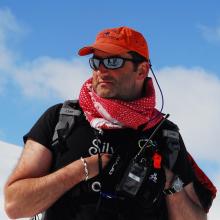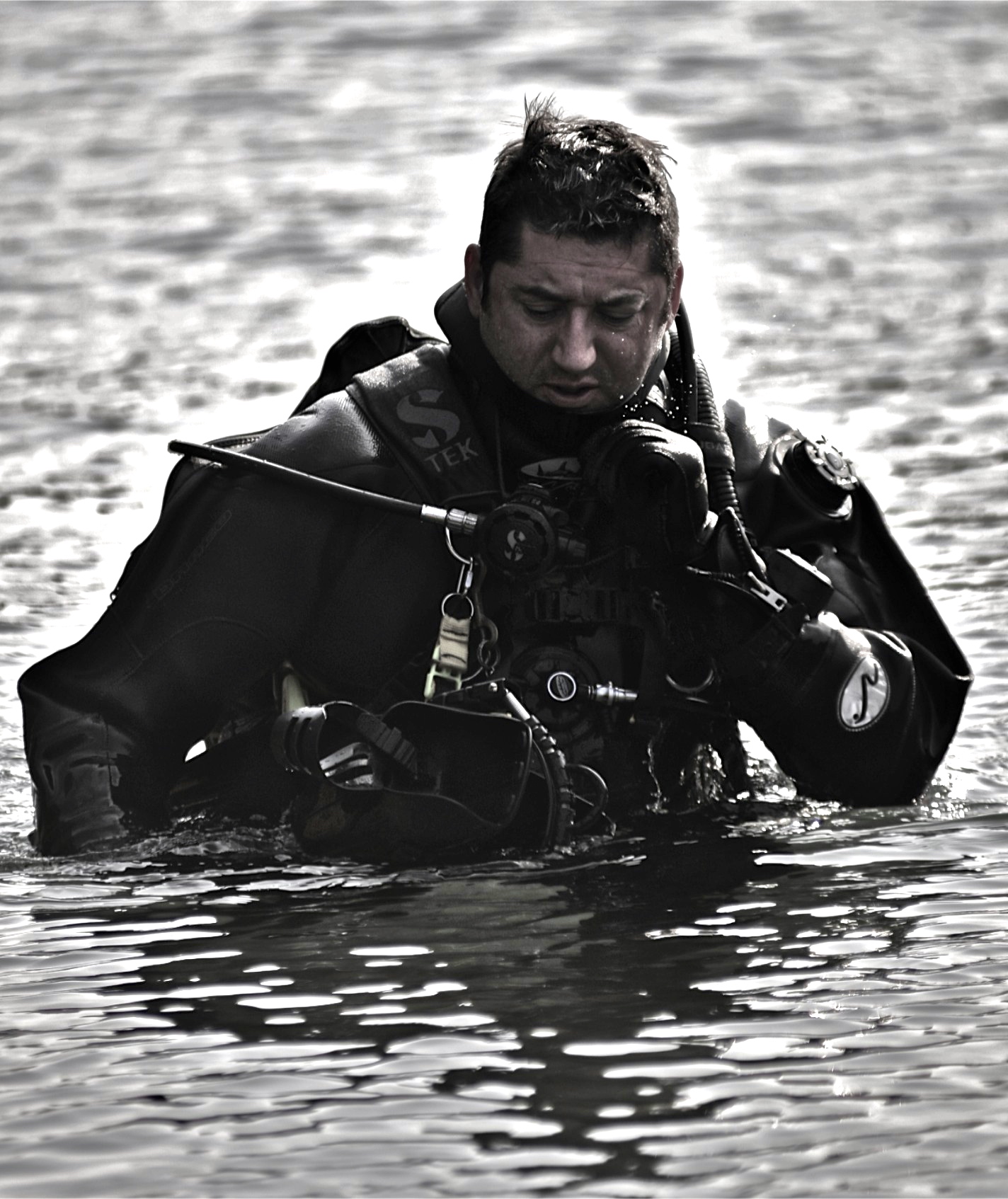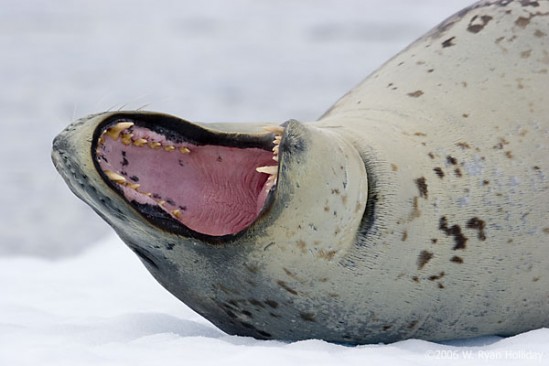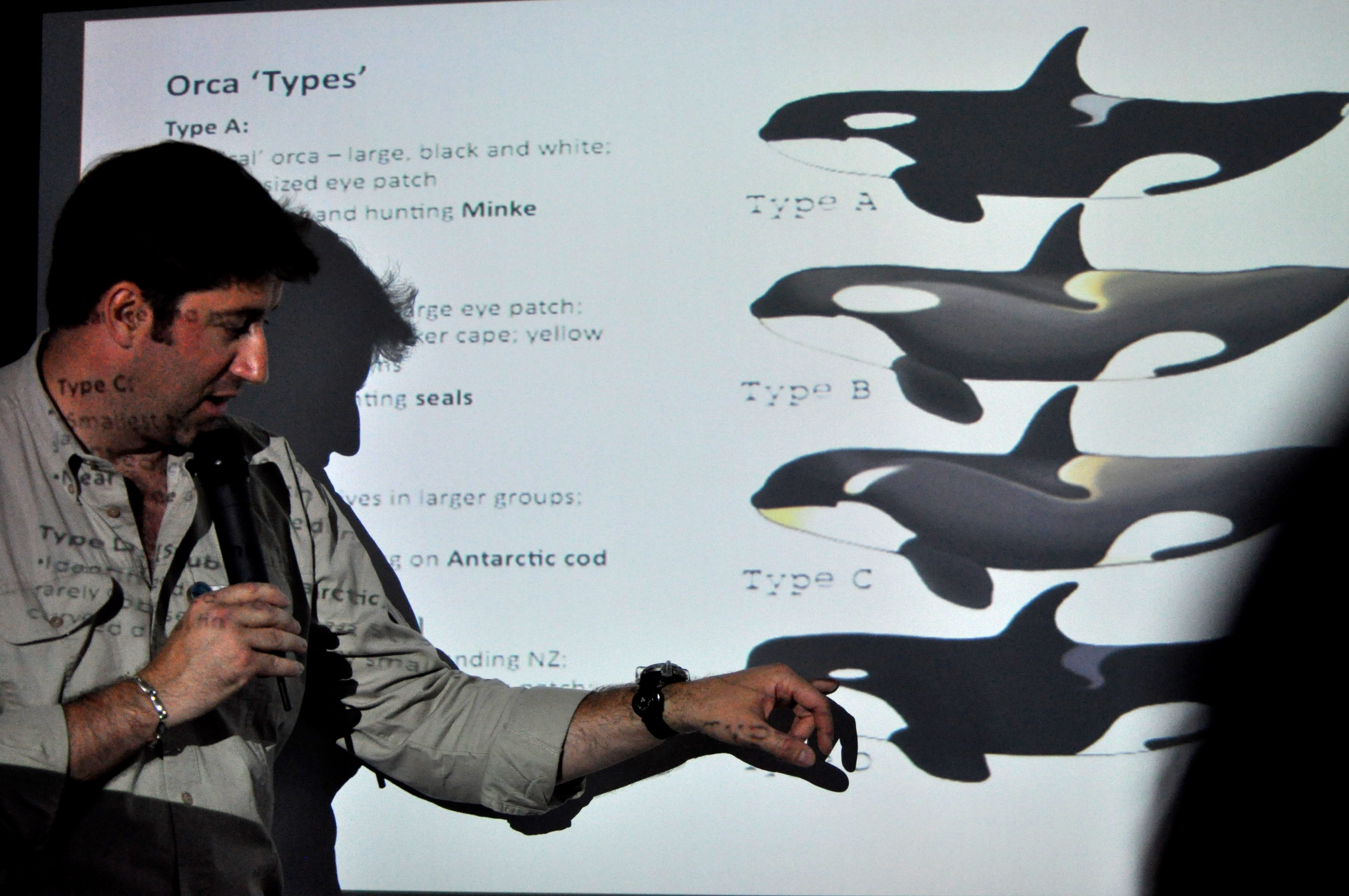
If you think the man in this photo looks pleasantly chilled and self-confident, think again.
Behind the shades, he has the deepest respect for, and a healthy concern about, the possible presence of polar bears.
‘They're awesome predators,’ he says. ‘11ft 6" long, 4ft tall at the shoulder, 12 foot tall standing upright, 1,001 kilos – one of them would certainly fill your front room.
‘What’s more, they’re smart. They’re big. It’s hard to see them coming. And they can run at 30 mph.
‘You can’t afford to be relaxed around them for one minute.’
Murray has come to spend his working life in the Arctic and Antarctic via a childhood spent studying animals in Aberdeen, and bits of careers in grave-digging, graphic design, education for various Scottish marine conservation organisations, and a stint spent with the British Antarctic Survey.
He now lives on London Street, but is usually away for 2 months at a time, 4 times a year. He leads groups, wrangles film crews, and looks after tourist parties, keeping them away from danger, making sure they do no harm to their surroundings.
‘We’re incredibly disciplined,’ he says. ‘We have the strictest rules about what we can do and where we go. We always stand up to clients who step out of line.’
Murray can barely contain his enthusiasm for the ‘mind-blowing spaces’ at the top and bottom of the world. Not all snow is the same, and he loves the variety of climates, landscapes and geologies. He waxes lyrical about the lack of manmade noise there, the abundant wildlife, the charismatic megafauna.
‘I hate leaving my partner and baby son behind,’ he says, ‘I miss them terribly when I’m away. But it’s part of who I am.’

They’re ‘hugely capable and impressive creatures’, he recalls, and they can be lethal.
He was observing a big one from the water one day, when it slipped off the ice and disappeared. Murray swam down, checking to see if it had approached him from behind or below. But instead, he found it hanging over his head, blocking him from reaching the surface, mouth wide in a massive 50cm gape full of intimidating teeth.

The leopard seal finally left, bloodily munching something else at close quarters a few moments later.
These precious and intriguing environments are themselves under threat. Climate change is having an affect at both ends of the world, and Murray is apprehensive about their future. What look like subtle temperature changes, he says, can have a devastating effect on species, particularly plants which have evolved to fill some very narrow ecological niches.
Already he has noticed the arrival of rain and fog in the Antarctic, almost unheard of in the past. Up north, the sea ice is retreating, meaning one must travel further in search of the polar bears for whom the floes were once a seemingly endless hunting ground. The threat of pollution from cargo ships navigating a north-west passage over Canada is hard to contemplate calmly.
'Will the bears survive another 50 years?' I ask him.
‘Actually, I think they will,’ he answers. ‘They’ll take a massive hit to their population. But they’re intelligent and adaptable. I think they’ll change their behaviour and start living more like land bears.’
Wherever they end up, one suspects Kelvin Murray will be there to see them.
